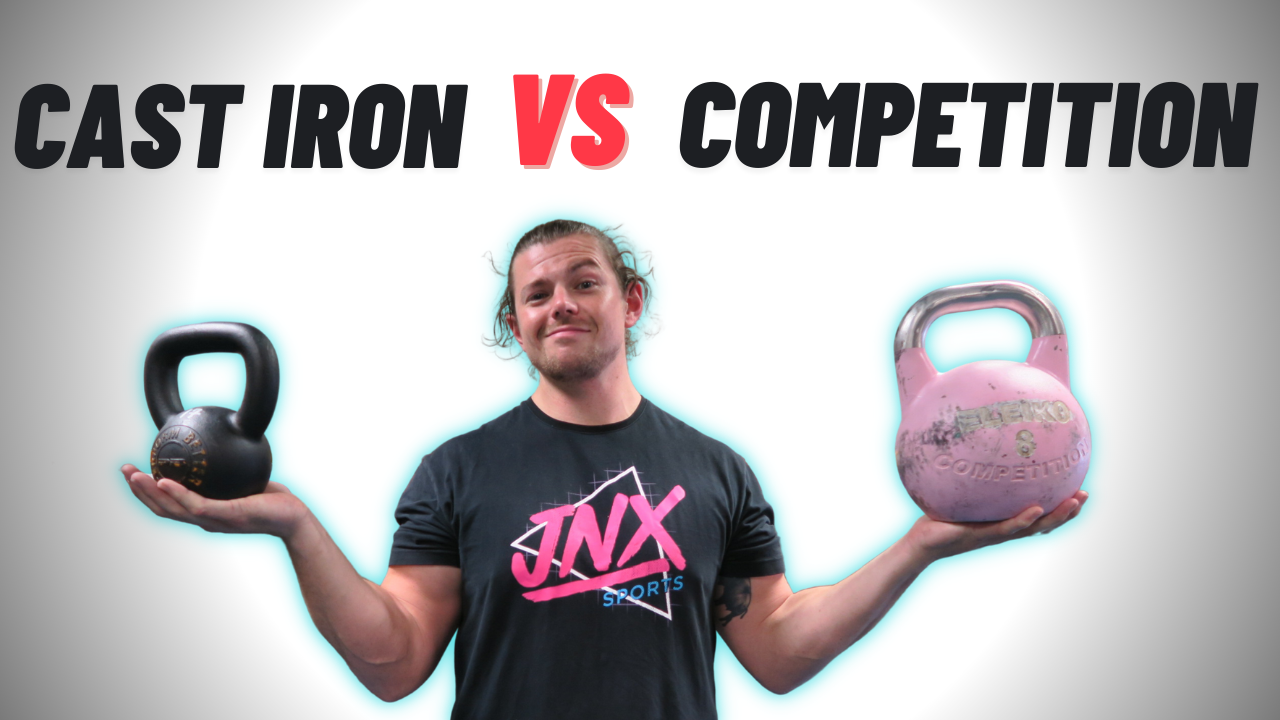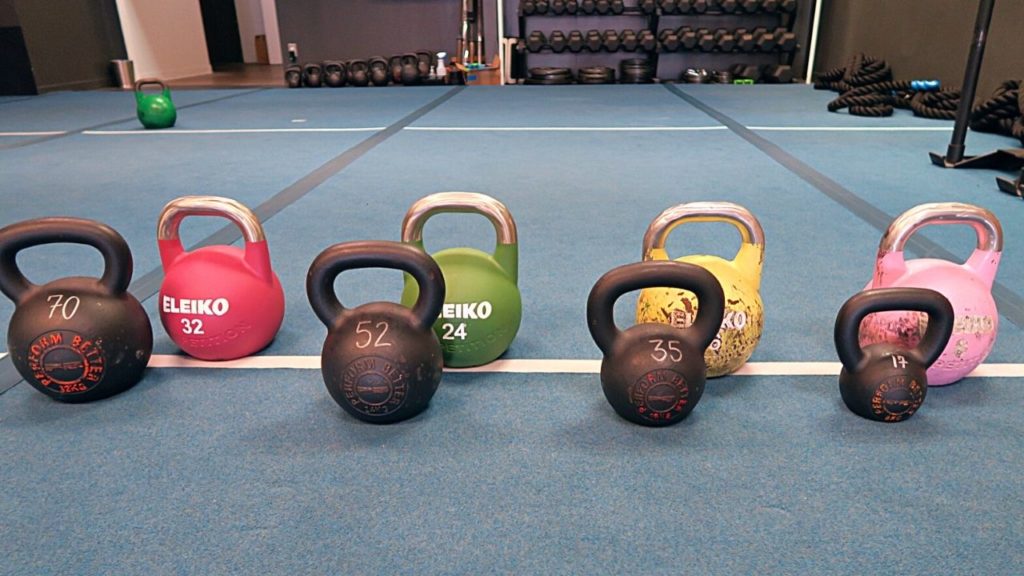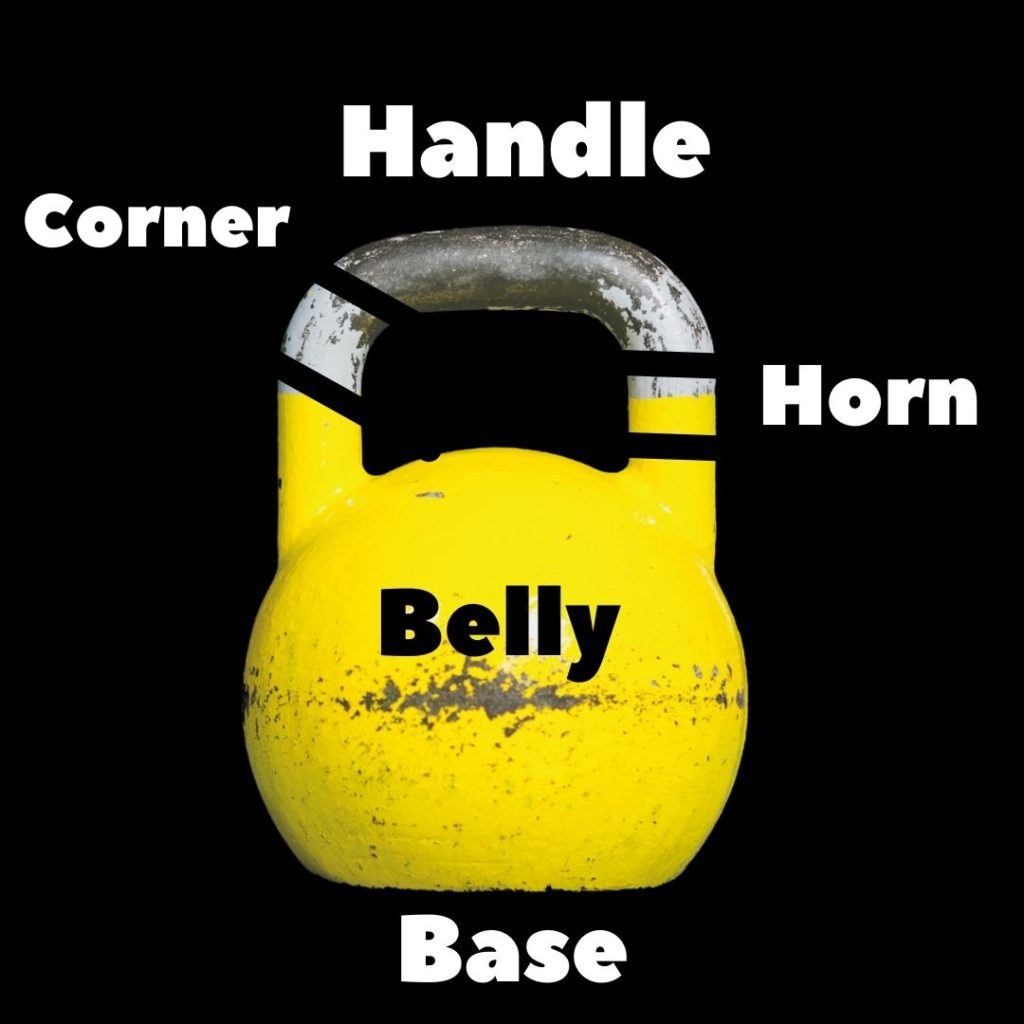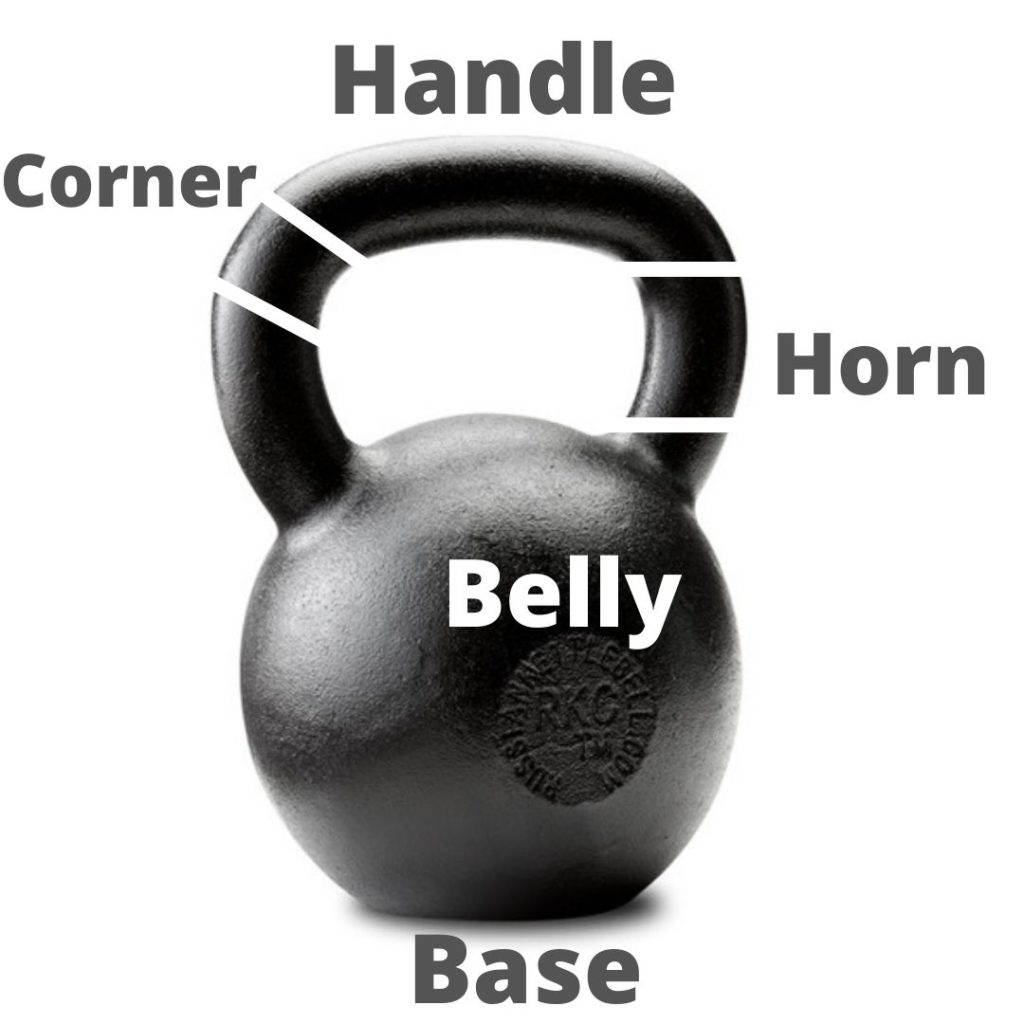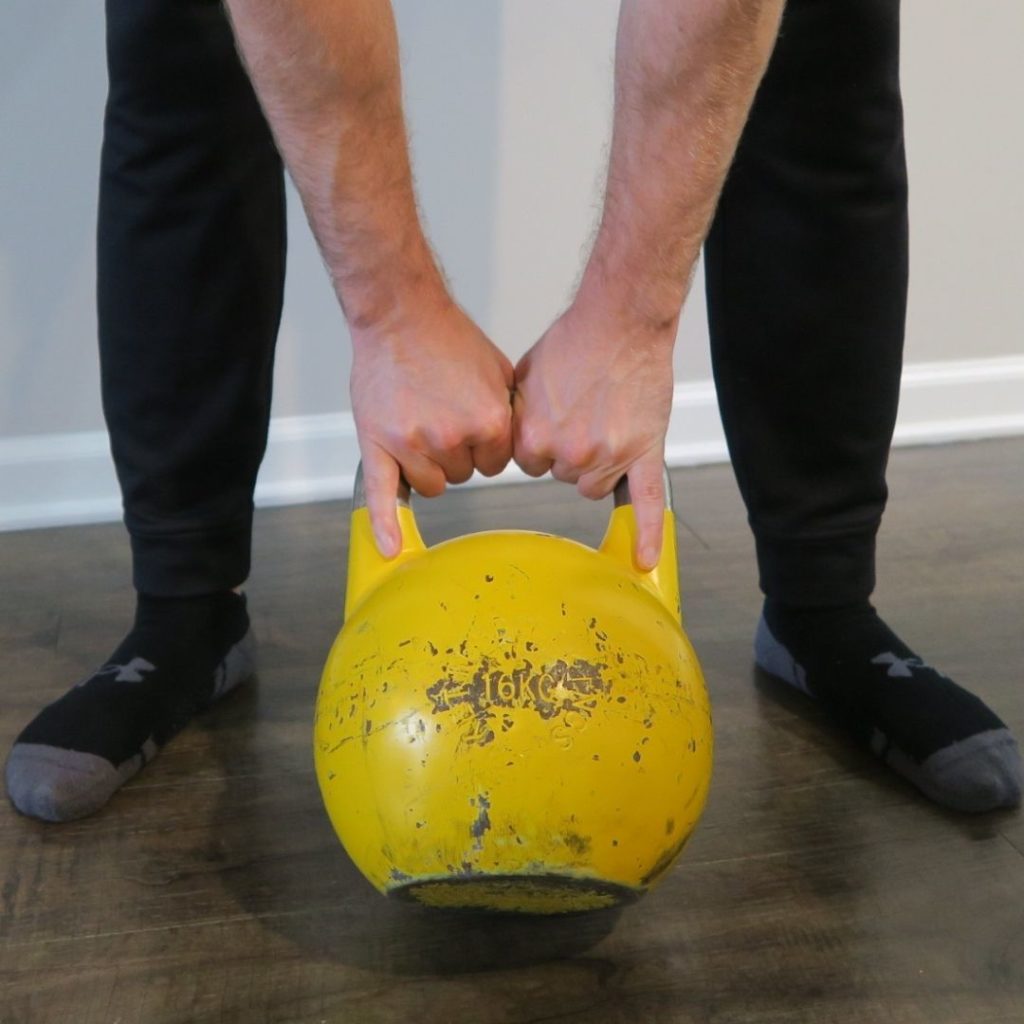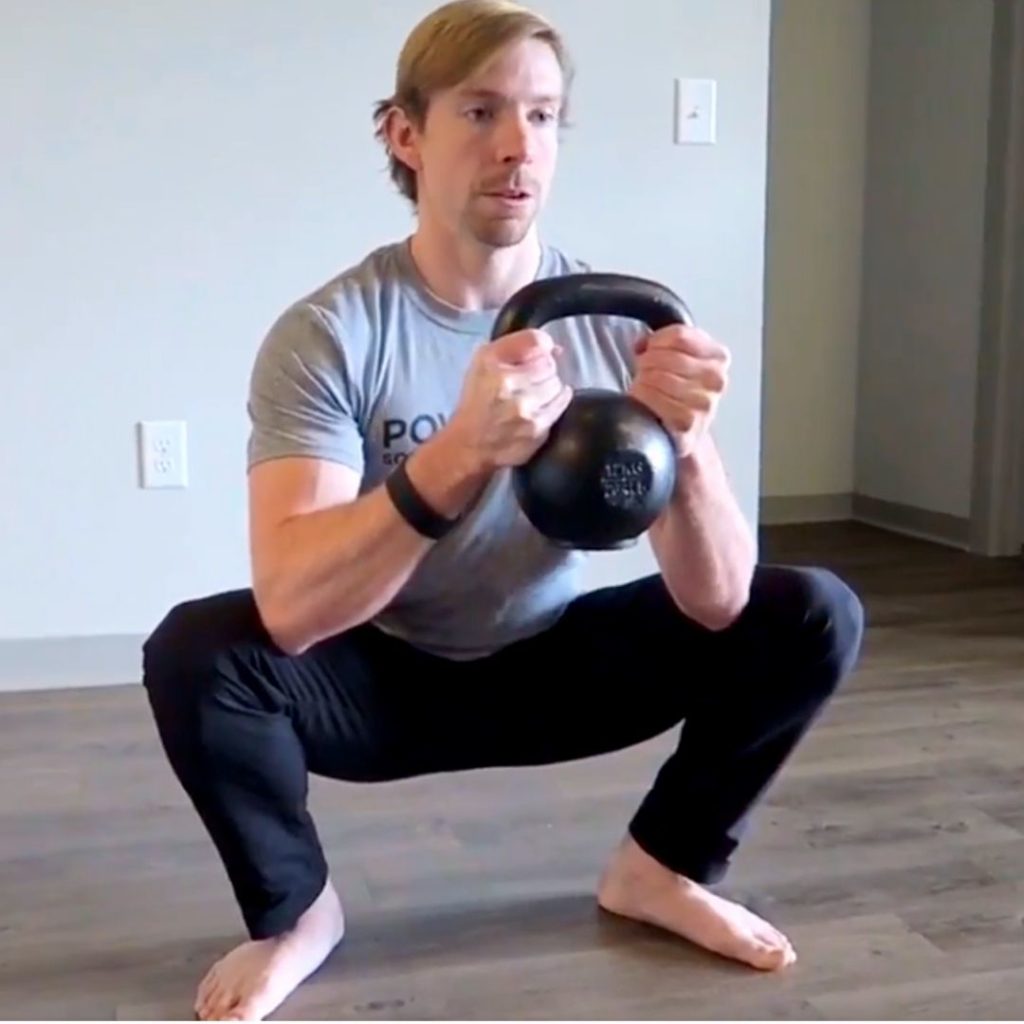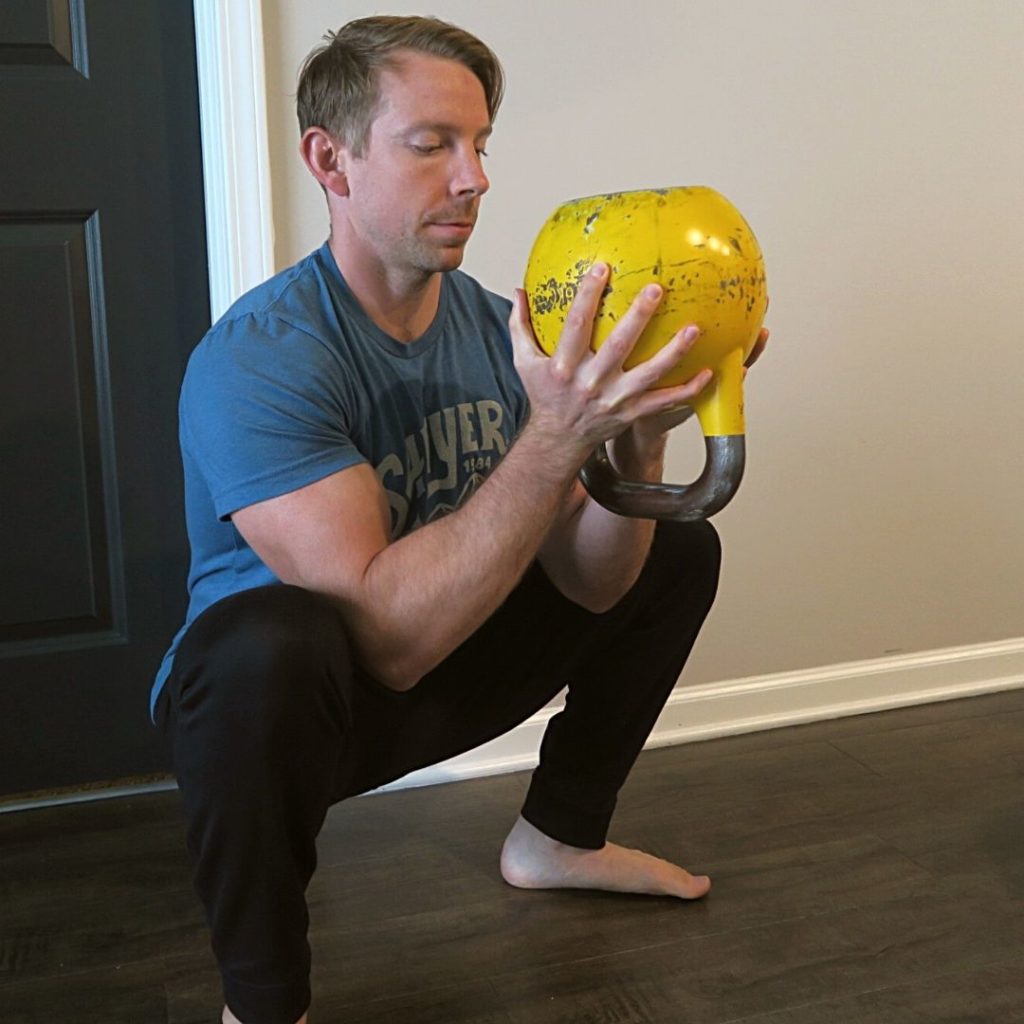Cast Iron vs. Competition Kettlebells – What are the differences and do they matter?
Good quality kettlebells are made according to one of two general design styles – competition kettlebells (so named because they are used in traditional Russian kettlebell sport) and cast iron kettlebells (so named because, well, that’s what they’re made of).
There’s plenty of debate on the Internet about which style of kettlebell is best. Like most either/or discussions, it all boils down to common sense plus some personal preference.
In this article, we’re going to take a look at the differences between cast iron and steel competition kettlebells, and lay out the pros and cons of each.
Competition Kettlebells
The hallmark of this kettlebell style is the consistency of size dimensions across all weights.
An 8 kg and 48 kg competition kettlebell will be exactly the same size through the handle and belly – the lighter bell is simply more hollow on the inside or packed with light filler material.
This standardization makes it the preferred kettlebell for traditional Russian Girevoy Sport training. GS involves long, high-repetition efforts in advanced kettlebell lifts.
Cast Iron Kettlebells
The cast iron kettlebell is what you will find in most gyms and is usually finished with a protective powder coat that provides a fine grip texture and prevents rust.
Cast iron bells get physically larger as the weight increases – both in the belly and the handle.
Major Differences Between Cast Iron & Steel Kettlebells
How do the differences in kettlebell design actually impact performance?
Practically speaking, we need only examine two main variables:
- How the kettlebell handle affects grip dynamics
- How the kettlebell “window” and belly size affects the rack/press position
Kettlebell Handle Design
Let’s take a look at how the handle design influences the primary kettlebell lifts.
Swings & Snatches
The competition kettlebell is made with single-hand use in mind as the Girevoy Sport lifts are performed with one hand per bell.
For our snatches and 1-hand swings, this is no problem.
Folks with larger hands might have a tough time squeezing all ten fingers in the width of a comp handle for deadlifts and 2-hand swings. The pinky fingers will either rub against the corner, or stick out. Both compromise performance.
Of course, this issue can come up with cast iron bells as well (especially at smaller sizes), but the long rounded corners tend to offer plenty of grip space.
What about handle thickness?
For me, both handle styles have pros and cons.
As cast iron bells get heavier, their handles get thicker. Training with these heavy, thick-handled bells is a tried-and-true method for developing grip strength and endurance.
The downside? Grip fatigue could limit volume, especially for beginners and folks with smaller hands.
Your heart and hamstrings may still be going strong, but if your grip gives out, training is over.
On the other hand, a competition kettlebell handle remains the same thickness no matter its weight – roughly comparable to a 12 kg cast iron handle.
The relatively narrow handle at heavier weights will allow you to get more reps in with lower forearm fatigue, but you could be leaving grip gains on the table.
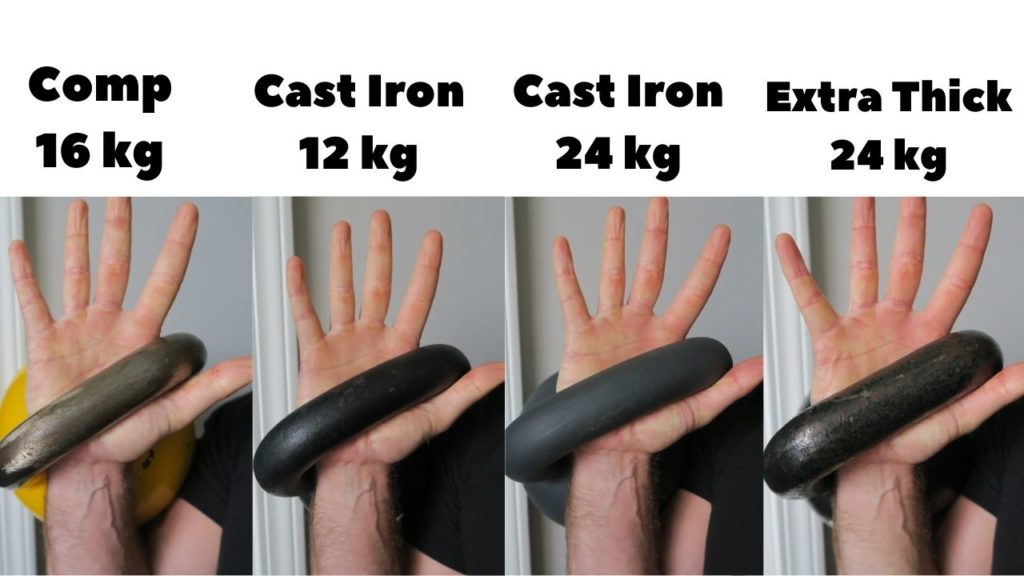
Squats
Cast iron kettlebells have a pronounced horn or curvature where the handle meets the belly.
Holding a kettlebell by the horns allows you to keep a mostly straight wrist position and is how we typically perform the goblet squat.
Steel kettlebell handles are more squared off and straight at the horn. Think Batman vs. Mickey Mouse ears.
You certainly can hold a competition bell by the horns, but it won’t feel quite as secure, especially at heavier weights. That’s why I suggest using a “belly hold” grip when goblet squatting with a competition kettlebell.
Presses & Get-ups
Strictly speaking to the impact of the handle design to overhead lifts, there’s really not a huge difference and most of it comes down to personal preference.
I prefer a thick cast iron handle to grip against while performing heavy military presses.
Likewise with Turkish get-ups.
Of course, there’s not much difference in handle thickness in the lighter weight range anyway.
What about the handle corners?
Most of the time, we grip the kettlebell more or less in the middle of the handle.
But when the kettlebell is racked for presses and squats, or held overhead in the get-up, we can sneak our grip more into the thumb-side corner to achieve a steeper diagonal angle with handle across the palm.
There’s some debate on what type of handle positioning is most optimal for different lifts, but suffice it to say that every human hand + kettlebell combination is unique and personal preference goes a long way.
As we’ve seen, the cast iron corner is quite rounded while the competition corner forms a closer angle. This will likely make a difference only for the most picky kettlebeller.
Kettlebell Window & Belly Size
The “window” is the space between the handle and the belly of a kettlebell. This window space, combined with the size and design of the belly, dictates how the kettlebell will rest on the back of the forearm while in the rack or press position.
No matter the size or style of kettlebell you lift, the two most important things for an optimal rack position are:
- Ability to maintain a straight (or goose-necked) wrist
- Finding the angle and position that allows the kettlebell to rest on the forearm with the least discomfort
* A disclaimer – your first kettlebell cleans, presses, and get-ups will almost assuredly result in some light bruising on the forearm. Your skin will adapt and toughen. Until then, practice these lifts sparingly or consider a KettleGuard.
It’s hard to pass blanket judgements on window sizes because one person’s “ouch” is another’s optimal.
That said, here’s how the styles differ and what that might mean for you.
The competition kettlebells’ dimensions are standardized, so you’ll always have the same space between handle and belly across all weights.
This feature could go either way:
If you can easily find a comfortable rack position, you’re good to go with any comp bell. If not, you’re stuck with awkward ergonomics.
Another quick point – an 8 kg kettlebell looks much heavier to the new lifter. As coaches, we should be sensitive to our clients’ perceptions. While one lifter exclaims “Hey, it’s like pressing a big balloon!” the other might be thinking “Is this thing gonna smash my face?”
Sometimes it helps if light weights look the part.
Cast iron kettlebells, likewise, have pros and cons associated with their variable window and belly sizes.
Many of the lightest cast iron kettlebells (6, 8, and 10 kg) are so small that the belly ends up resting directly on top of the wrist bone on the pinky side. Not fun.
Of course, that smaller window design might be the perfect fit a smaller person. It depends.
As cast iron bells get heavier, their windows increase (to a point). In general, this feature helps with pressing strength by actually moving the bell’s center of mass closer to the shoulder.
As we move into 36 kg+ range, some lifters find the sheer size of the cast iron belly puts too much pressure on the forearm and prefer a relatively smaller steel kettlebell.
One more note on belly size:
Any competition kettlebell has roughly the same belly size as a 28 kg cast iron kettlebell. Keep this in mind during your swings – especially double kettlebell swings.
Swinging a pair of 12 kg competition kettlebells will require a wider stance compared to swinging a pair of 12 kg cast iron kettlebells.
Where to Buy Cast Iron & Competition Kettlebells
With the rise of at-home functional fitness, more and more retailers are jumping into the kettlebell game.
Unfortunately, many are simply cashing in on the hype as the market becomes flooded with cheaply-made bells. Plus, most weights you see in stores are barely heavy enough to hold a door open, much less be of any use for training.
The good news is there are plenty of trusted online sellers that offer quality kettlebells – both in cast iron and competition style.
Here’s my top-3 list of recommended kettlebell brands and merchants based on my own personal use (all links are affiliate):
The Bottom Line (and a confession)
It’s not the kettlebell that counts. It’s how you use it.
Sure, we all have personal preferences when it comes to our kettlebell style, but I’ve found that anyone who masters the foundational kettlebell skills can get great use out of any bell.
I’ll admit, I personally use cast iron kettlebells for the vast majority of my training. I started out with cast iron bells and over the years have developed a certain nuanced kinesthetic sense around them.
No doubt a Girevoy Sport practitioner would have a lot more to say on this subject, but I think we covered all the major points that affect the average trainee.
As always, let your own experience be your guide.
